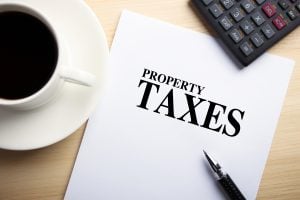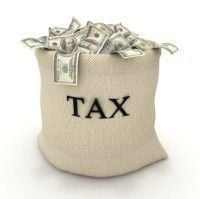
2017 Property Taxes Eagle County
In less than a month, property owners in Eagle County and throughout Colorado will be receiving their Notice of Valuation for the real estate to determine their 2015 Property Taxes Eagle County. This is the amount that is used to determine your property taxes for the next two years. Below is a basic overview of how the residential tax process in Colorado works so that you can determine if your Assessed Value seems accurate and, if not, what you might do about it. I am attempting to use as little jargon and definitions as possible to make it easier to digest. I hope that I am successful but I recognize this is a very dry topic.
Property Taxes Eagle County 101:
Your property was valued as it existed on January 1 of the current year. The Eagle County assessor is required to use comparable sales data from the 24-month period ending June 30, 2016 to determine the value. If data is insufficient during this time period, then the assessor may use data from the five-year period ending June 30, 2016. Normally only two years back is warranted. The assessor then must time adjust the data in order to determine the value on January 1, 2017 even if a given comparable was sold, for example, six months prior to that date and was in a period of inflation (appreciation). Trending data helps the assessor make an adjustment to reflect those changes.
Once the assessor determines the market value of your property it is multiplied by the Assessment Percentage to come up with your Assessed Value. The Assessment Percentage is the amount of property tax burden that is allocated to residential real estate (as opposed to commercial and other property types). The allocation is currently 7.96%. Once each property’s assessed value is determined, it should not change next year absent something unusual occurring like a major renovation.
Example Calculation:
Market Value x Assessment Percentage = Assessed Value
($2,000,0000) (7.96% for residential) ($159,200)
Note: This example is based on fake figures so don’t get worried about the amounts.
The Assessed Value is what is multiplied by the mill levy to give you your actual tax assessment for the year. What is a Mill Levy?
The mill levy is a calculation made by a specific taxing entity in order to raise an exact amount of revenue. If you don’t care how the Mill Levy for your property is calculated then just click here to go straight to read my blog on what to review to help decide if you should consider protesting our property tax valuation. Just know that the Mill Levy is the amount that your Assessed Value is multiplied by to get your taxes for the year.
To understand the calculation of your Mill Levy It is sometimes easier to just look at an example calculation. A mill levy is essentially a calculation of what percentage you are responsible for of a given tax entity’s total revenue.
Example of County Tax Rate:
Total Amount of Revenue Tax Entity Is Collecting = Mill Levy
Total Amount of All Assessed Values in Tax Entity Authority
$1,398,000 = 1.398% or 13.98 mills
$100,000,0000
I prefer to ignore the translation to “mills” because it just is confusing. Think of the percentage and not the mills. It is essentially the percentage of the total tax that you are responsible for this year for that tax entity. In this example you would be responsible for 1.398% of the total county taxes due for residential property.
Your property will likely have several tax entities that have authority to tax your property so all of the Mills are added up to give the total mills levied against your property.
Example:
County Tax Rate = 1.398 %
Town Tax Rate = 0.875 %
School District Tax Rate Taxes = 5.25 %
Water & Sanitation Tax Rate = 0.0623 %
Total Tax Rate 7.5853 %
Total Mill Levy 75.853
Assessed Value of Your Property x Mill Levy = Taxes
($159,200) x .075853 = $12,075.80
Note that Colorado law does limit yearly revenue increases through a law referred to as TABOR, however, voters can and have often approved increases above the current revenue limitations (this is often referred to as “Debrucing” although not everyone likes that term).
Click here to go to my next blog post about how to decide whether you should consider protesting your property valuation. Assuming that you haven’t fallen asleep! Also, feel free to call me with any comments or questions. Malia 970.977.1041.
————— end blog 2015 Property Taxes Eagle County———————–











